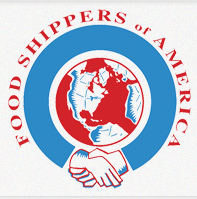 Spot rates for truckload services are unusually high for this time of year. And that’s good news for an industry that has struggled for years with an increasing burden of regulations, seesawing fuel prices and razor-thin profit margins.
Spot rates for truckload services are unusually high for this time of year. And that’s good news for an industry that has struggled for years with an increasing burden of regulations, seesawing fuel prices and razor-thin profit margins.
DAT, a service that matches truck space with available loads, reports that the spot market didn’t experience the drop in late 2013 that’s typical for the last two months of the year. Instead, van rates in December were the highest the firm has seen since it began tracking rates in 2009.
Average spot van rates closed out the year at $1.95 per mile (including fuel surcharges), up from $1.87 in November and $1.84 in October. “I don’t think I’ve ever seen that before, and I’ve been a transportation pricing analyst for decades,” DAT’s Mark Montague said in a recent blog post.
Rates were up just 2.6% for the full year, but the real action took place in the second half of 2013. Freight volumes were also atypically strong for that period, although tapering off as usual at year end.
“Typically after mid-summer, we usually see a fairly steady decline in freight for the balance of the year, with November and December showing either a downtick or flat,” said David Schrader, senior vice president of operations with DAT. “2013 was very abnormal in volume, setting the stage for rates to rise.”
There were numerous reasons for the surge. One was a stricter hours-of-service limit on truck drivers, imposed by the Federal Motor Carrier Safety Administration in July. Depending on the carrier, the change cut driver productivity by 3% or more, placing pressure on rates. In addition, freezing temperatures caused numerous delays. And some shippers appeared to be boosting orders of key commodities such as steel in the fourth quarter, anticipating price increases in 2014.
But the biggest factor behind the rate rise was a strengthening economy, across multiple sectors. Demand for trucks in the energy business didn’t drop off in the fourth quarter, driven by a continuing need for fracking and drilling equipment. Beginning in August, grain production returned to normal levels, generating increased shipments of meat products and animal feed. Produce levels were strong, especially for potatoes, which experienced a late harvest. Factory output, particularly in the automotive industry, was relatively high.
“Just about every sector of the economy is a normal or above normal,” said Montague.
Shippers flocked to the spot market to supplement capacity they had locked up through contracts. Expect the year-end rise in spot rates to affect contract levels, which have been flat for the last couple of years, in the early part of 2014. “Spot will lead contract buys by a quarter or two,” said Schrader.
Much of the action on the spot market consists of truck brokers securing space from small to medium-sized carriers, which operate under extremely narrow margins. During 2012, carriers’ costs rose twice as fast as their revenues, according to DAT. So the recent upward rate trend, while leading to higher prices for shippers and consumers, can only be seen as positive for a sector that has been struggling to survive since the Great Recession of 2008-09.
Small carriers depend heavily on load boards such as those of DAT to fill their empty trucks and avoid “deadheading.” Empty miles rose in 2012, but are expected to have declined for 2013. As a result, truckers can focus on the most profitable hauls. “When loads become more plentiful, and capacity tightens, carriers have the luxury of choice,” said Schrader.
Oddly, it wasn’t a good year for North American freight activity in general. The latest freight index report from Cass Information Systems, Inc. describes the climate for freight as “mediocre.” Average monthly freight shipments for the year were 0.7% lower than in 2012.
“Inventories remained high, manufacturing stalled mid-year, and exports and imports were relatively flat for most of the year,” the report said. “All of this contributed to another bumpy year, in the recovery that hasn’t quite gotten there.”
Cass’s end-of-year figures are in direct opposition to those of DAT and the van spot-rate market. Between November and December, North American freight volumes plunged 6.2%, the year’s largest monthly drop. But the overall freight picture is expected to improve as 2014 progresses, Cass said.
DAT’s own figures show a positive environment for the truckload industry, which has been battered by competitive headwinds, especially from the surging rail and intermodal sector. “Ultimately, there’s got to be a balance,” said Schrader. “You like to see some tailwinds for truckers.”
(Food Shippers of America)
